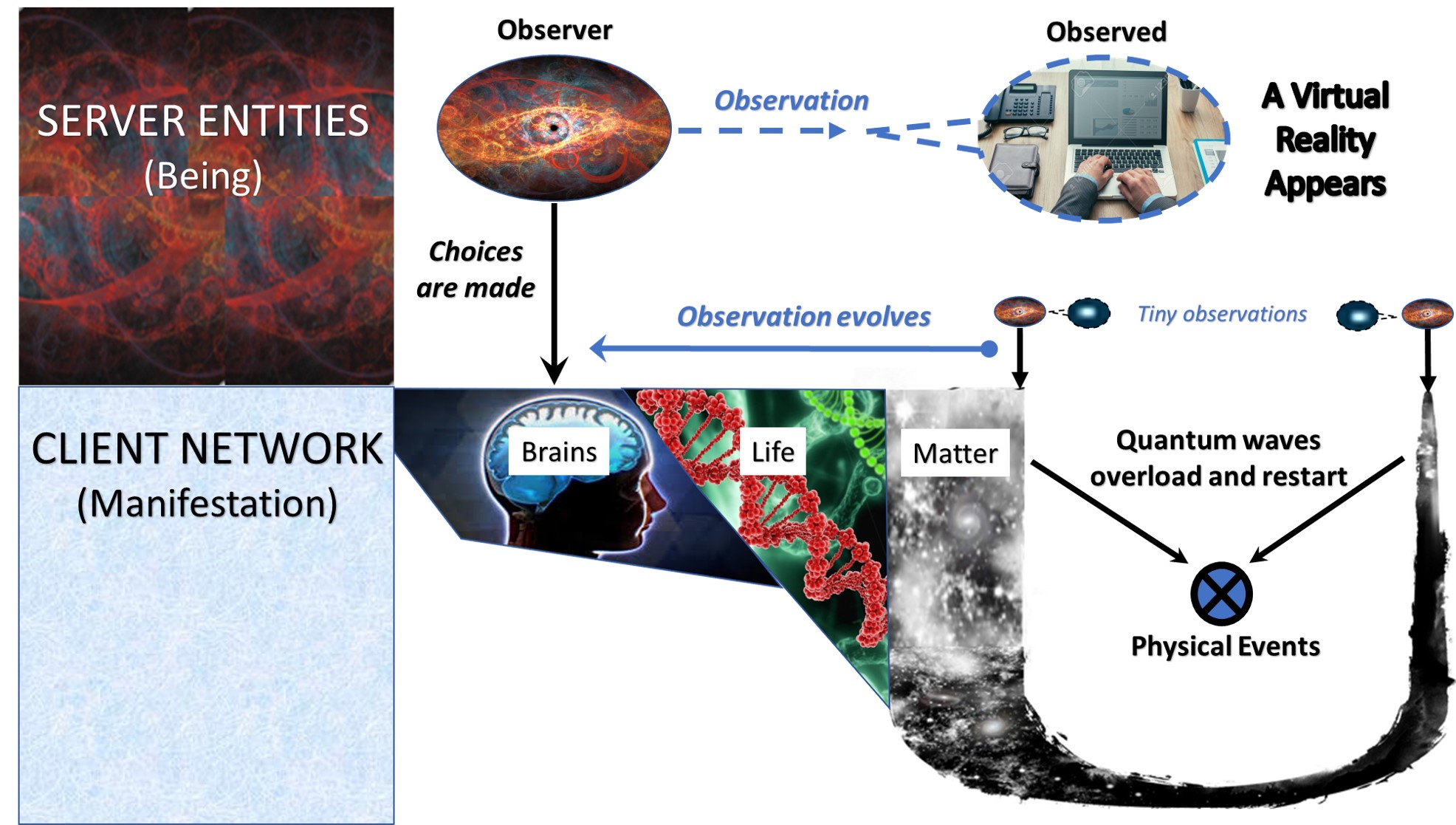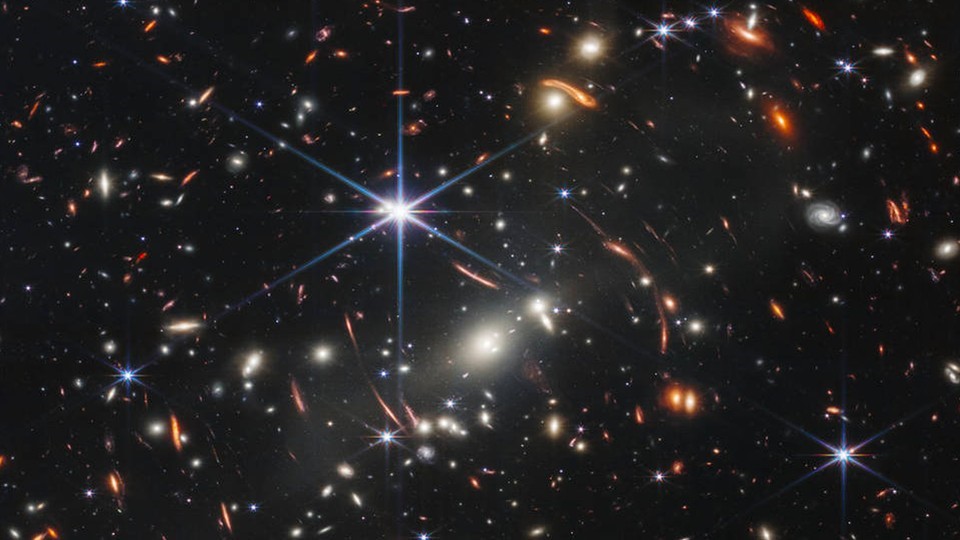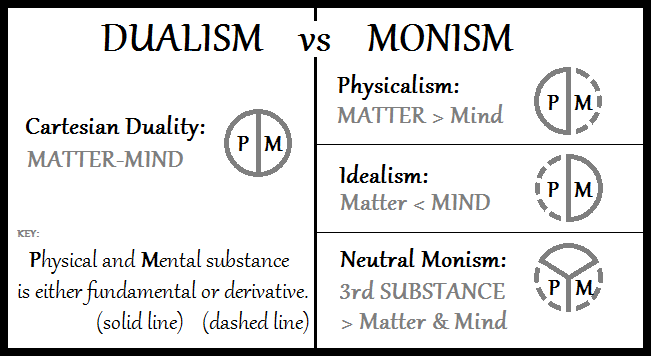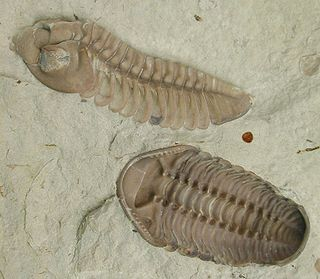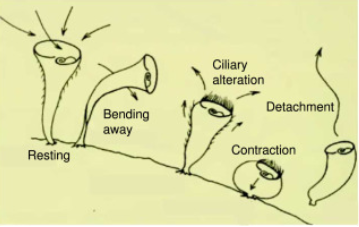Abhedananda, S. (1905). Vedanta Philosophy. New York, The Vedanta Society.
Adolphs, R. (2008). Fear, Faces, and the Human Amygdala. Curr Opin Neurobiol., 18(2).
Al-Khalili, J., & Lilliu, S. (2020). Quantum Biology. Scientific Video Protocols. https://doi.org/10.32386/scivpro.000020
Al-Khalili, J., & McFadden, J. (2014). Life on the Edge. Bantam Press.
Aspect, A., Grangier, P., & Roger, G. (1982). Experimental Realization of Einstein-Podolsky-Rosen-Bohm Gedankenexperiment: A New Violation of Bell’s Inequalities. Physical Review Letters, 49(2), 91–94.
Baars, B. J. (1988). A Cognitive Theory of Consciousness. Cambridge, MA: Cambridge University Press. https://en.wikipedia.org/w/index.php?title=Global_workspace_theory&oldid=971315492
Baars, B. J., & Edelmann, D. B. (2012). Consciousness, biology and quantum hypotheses. Phys. Life Rev., Sep.
Baars, B. J., & Laureys, S. (2004). Brain, conscious experience and the observing self. Trends in Neuroscience, January.
Baggot, J. (2013). Farewell to Reality: How fairytale physics betrays the search for scientific truth. Constable.
Ball, P. (2011). Quantum Biology. Nature, 474(16 June), 272–274.
Benovsky, J. (2016). Dual-Aspect Monism. Philosophical Investigations, 39(4), 335–352.
Blausen.com staff. (2014). Medical gallery of Blausen Medical. WikiJournal of Medicine, 1(2).
Block, N. (1995). On a confusion about a function of consciousness. Behavioral and Brain Sciences, 18, 227–287.
Block, N., & Stalnaker, R. (1999). Conceptual Analysis, dualism and the explanatory gap. Philosophical Review, 108, 1–46.
Blokland, A. (1998). Reaction Time Responding in Rats. Neuroscience & Biobehavioral Reviews, 22(6).
Bosman et al., C. A. (2012). Attentional stimulus selection through selective synchronization between monkey visual areas. Neuron, September.
Brooks, M. (2020). Is the universe conscious? It seems impossible until you do the maths. New Scientist, May. https://www.newscientist.com/article/mg24632800-900-is-the-universe-conscious-it-seems-impossible-until-you-do-the-maths/
Cepelwicz, J. (2020). Hidden Computational Power Found in the Arms of Neurons. QuantaMagazine, January 14.
Chalmers, D. J. (1996). The Conscious Mind. Oxford University Press.
Chalmers, D. J. (2003). Consciousness and its Place in Nature. In Blackwell Guide to the Philosophy of Mind (S. Stich and F. Warfield, eds). Blackwell Publishers.
Chomsky, N. (2006). Language and Mind: Vol. Third. Cambridge University Press.
Churchland, P. S., & Sejnowski, T. (1992). The Computational Brain. MIT Press.
Clayton, N. S., Dally, J. M., & Emery, N. J. (2007). Social cognition by food-caching corvids. The western scrub-jay as a natural psychologist. Philosophical Transactions B, 362, 507–522.
Coleman, S. (2006). Being Realistic: Why Physicalism May Entail Panexperientialism. Journal of Consciousness Studies, 13(10–11), 40–52.
Conway, J., & Koch, S. (2006). The free will theorem. Found. Phys., 36(10), arXiv:quant-ph/0604079v1.
Crick, F. (1995). The Astonishing Hypothesis. Scribner reprint edition.
Crick, F., & Kock, C. (1990). Towards a neurobiological theory of consciousnes. Semin Neurosci, 2, 263–275.
Cruz, L. et al. (2005). A Statistically Based Density Map Method for Identification and Quantification of Regional Differences in Microcolumnarity in the Monkey Brain. Journal of Neuroscience Methods, 141(2), 321–332.
Cutting, N., Apperly, I. A., Chappell, J., & Beck, S. R. (2014). The puzzling difficulty of tool innovation: Why can’t children piece their knowledge together? Journal of Experimental Child Psychology, 125, 110–117.
Daskalakis, Z. J. (2004). Exploring the connectivity between the cerebellum and motor cortex in humans. J Physiol., 557(Pt 2)(June 1), 689–700.
Dehaene, S. (2014). Consciousness and the Brain. Penguin Books.
Dennett, D. C. (1991). Consciousness Explained. Little, Brown & Company.
Dexter et al., J. P. (2019). A Complex Hierarchy of Avoidance Behaviors in a Single-Cell Eukaryote. Current Biology, 29(24), 4323–4329.
Dimond, S. J. (1980). Neuropsychology. Buttersworth.
Edelman, G. M. (1987). Neural Darwinism: The Theory Of Neuronal Group Selection (New Ed edition). Basic Books.
Edelman, G. M. (2003). Naturalizing Consciousness: A theoretical framework. Proc. Natl. Acad. Sci. USA, 100(9), 5520–5524.
Edwards, L. (2010). Lightning really does make mushrooms multiply. Phys.Org, April.
Engel, G. S. et al. (2007). Evidence for wave-like energy transfer through quantum coherence in photosynthetic systems. Nature, 446, 782–786.
Feigley, D. A., & Spear, N. E. (1970). Effect of age and punishment condition on long-term retention by the rat of active- and passive-avoidance learning. Journal of Comparative and Physiological Psychology, 73(3), 515–526.
Feldman, J. (2013). The neural binding problem(s). Cogn. Neurodyn., 7, 1–11.
Fries, P. (2015). Rhythms for cognition:Communication through coherence. Neuron, 88(1), 220–235.
Frohlich, H. (1970). Long Range Coherence and the Action of Enzymes. Nature, 228(1093).
Gauger, E. M. et al. (2011). Sustained Quantum Coherence and Entanglement in the Avian Compass. Phys. Rev. Lett., 106(040503).
Gazzaniga, M. S. (2002). Michael Gazzaniga, The split brain revisited. 297 (1998), pp. 51–55. 37. Scientific American, 297, 27–31.
Gidon, A. et. al. (2020). Dendritic action potentials and computation in human layer 2/3 cortical neurons. Science, 367(6473), 83–87.
Goodale, M. A., & Milner, A. D. (2004). Sight unseen: An exploration of conscious and unconscious vision (pp. ix, 135). Oxford University Press.
Gray, C. et. al. (1989). Oscillatory responses in cat visual cortex exhibit inter-columnar synchronization which reflects global stimulus properties. Nature, 338, 334–337.
Grundmann et al., S. (2020). Zeptosecond birth time delay in molecular photoionization. Science 16 Oct 2020: Vol. 370, Issue 6514, Pp. 339-341, 370(6514), 339–341.
Han et al., C. (2016). Memory Updating and Mental Arithmetic. Front. Psychol., 2 February.
Hannula et al., D. (2005). Imaging implicit perception: Promise and pitfalls. Nature Reviews Neuroscience, 6, 247–255.
Harris et al., I. M. (2000). Selective right parietal lobe activation during mental rotation: A parametric PET study. Brain, 123(1), 65–73.
Hofstadter, D. R., & Dennett, D. C. (1981). The Mind’s I. Basic Books.
Hooker et al., C. I. (2006). Amygdala Response to Facial Expressions Reflects Emotional Learning. Journal of Neuroscience, 26(35), 8915–8922.
Humphrey, N. (1992). A History of the Mind. London: Chatto & Windus.
Jackson, F. (1982). Epiphenomal Qualia. The Philosophical Quarterly, 32(127), 127–136.
James, W. (1904). Does “Consciousness” Exist? Journal of Philosophy, Psychology and Scientfic Methods, 1(18).
James, W. (2019). The Stream of Consciousness (First Published 1892). In Consciousness and the Universe. Cosmology Science Publishers.
Jarvis, E., & et al. (2005). Avian brains and a new understanding of vertebrate brain evolution. Nature Reviews Neuroscience, 6(2), 151–159.
Jedlicka, P. (2017). Revisiting the Quantum Brain Hypothesis: Toward Quantum (Neuro)biology? Front. Mol. Neurosci., Nov 7.
John, E. R. (2005). From sychronous neuronal discharges to subjective awareness. Progress in Brain Research, 150, 143–171.
John et al., E. R. (2001). Invariant reversible QEEG efffects of anesthetics. Consci. Cogn., 10, 165–183.
Joseph, R. (2017a). Origins of thought: Consciousness, language, egocentric speech and the multiplicity of mind. In Consciousness and the Universe, Eds. Penrose, R., Hameroff, S., and Subhash, K. (pp. 429–455). Cosmology Science Publishers.
Joseph, R. (2017b). The neuroanatomy of free will: Loss of will, Against the will, “Alien hand.” In Consciousness and the Universe, Eds. Penrose, R., Hameroff, S., and Subhash, K. (pp. 138–167). Cosmology Science Publishers.
Kaku, M. (2014). The future of mind. Doubleday.
Kant, I. (2002). Critique of Pure Reason. In M. C. Beardsley (Ed.), The European Philosophers from Descartes to Nietsche. The Modern Library.
Kastrup, B. (2019). Analytic Idealism: A consciousness-only ontology. PhilArchive, https://philarchive.org/archive/KASAIA-3.
Kastrup, B. (2020). Materialism will be mocked. IAI News, Issue 8(4th March).
Kelly at al., E. F. (2007). Irreducible Mind: Toward a Psychology for the 21st Century. Rowman & Littlefield.
Kim, J. (1999). How Can My Mind Move My Limbs? Mental Causation from Descartes to Contemporary Physicalism. Philosophic Exchange, 30(1).
Kobayashi et al., Y. (2020). Attosecond XUV probing of vibronic quantum superpositions in Br2+. Physical Review A, 102(5).
Koch, C. (2014). Is Consciousness Universal? Scientific American Mind, 25, 26–29. https://doi.org/10.1038/scientificamericanmind0114-26
Koga et al., T. (2019). Nanosecond pulsed electric fields induce extracellular release of chromosomal DNA and histone citrullination in neutrophil-differentiated HL-60 cells. Scientific Reports, 9(8451).
Kurzweil, R. (1999). The Age of Spiritual Machines. Penguin Books.
Lakatos et al., P. (2013). The spectrotemporal filter mechanism of auditory selective attention. Neuron, 77, 750–761.
Lakatos, P. et. al. (2019). A New Unifying Account of the Roles of Neuronal Entrainment. Current Biology, 29(September 23).
Laurent et al., G. (1996). Temporal Representations of Odors in an Olfactory Network. Journal of Neuroscience, 16(12), 3837–3847.
Lefebvre, L., Reader, S. M., & Sol, D. (2004). Brains, Innovations and Evolution in Birds and Primates. Brain, Behavior and Evolution, 63(4), 233–246. https://doi.org/10.1159/000076784
Levine, J. (1983). Materialism and qualia: The explanatory gap. Pacific Philosophical Quarterly, 64, 354–361.
Libet, B. (2005). Mind Time: The Temporal Factor in Consciousness. Harvard University Press.
Liu et al., Z. (2016). The simple neuroendocrine-immune regulatory network in oyster Crassostrea gigas mediates complex functions. Nature Scientific Reports, May.
Lo Franco, R., & Compagno, G. (2016). Quantum entanglement of identical particles by standard information-theoretic notions. Nature Scientific Reports, 6(20603).
MacLean, P. D. (1990). The Triune Brain in Evolution. New York: Plenum Press. https://en.wikipedia.org/w/index.php?title=Triune_brain&oldid=981118559
Magdaong et al., N. M. (2014). High Efficiency Light Harvesting by Carotenoids in the LH2 Complex from Photosynthetic Bacteria: Unique Adaptation to Growth under Low-Light Conditions. J. Phys. Chem. B, 118.
Maiuri, M. et al. (2018). Coherent wavepackets in the Fenna–Matthews–Olson complex are robust to excitonic-structure perturbations caused by mutagenesis. Nature Chemistry, 10, 177–183.
Mandik, P. (2004). Silicon chip replacement thought experiment. Dictionary of Philosophy of Mind, May. https://sites.google.com/site/minddict/silicon-chip-replacement-thought-experiment
McCulloch, W. S., & Pitts, W. (1943). A logical calculus of the ideas immanent in nervous activity. Bulletin of Mathematical Biophysics, 5, 115–133.
McFadden, J. (2020). Integrating information in the brain’s EM field: The CEMI field theory of consciousness. Neuroscience of Consciousness, 6(1), 1–13.
McFadden, J., & Al-Khalili, J. (2018). The origins of quantum biology. Proc.R.Soc.A, 474.
McQueen, K. J. (2017). Is QBism the Future of Quantum Physics? ArXiv:1707.02030.
Melloni et al. (2007). Synchronization of Neural Activity across Cortical Areas Correlates with Conscious Perception. The Journal of Neuroscience, 27(11), 2858–2865.
Merker, B. (2007). Consciousness without a cerebral cortex: A challenge for neuroscience and medicine. Behavioral and Brain Sciences, 30, 63–134.
Minor, D. L. (2010). An Overview of Ion Channel Structure, in Handbook of Cell Signaling (Second Edition). Academic Press.
Minsky, M. L. (1986). The Society of Mind. Simon and Schuster.
Montgomery, J. C., Bodznick, D., & Yopak, K. E. (2012). The Cerebellum and Cerebellum-Like Structures of Cartilaginous Fishes. Brain, Behavior and Evolution, 80, 152–165.
Morsella, E. (2005). The Function of Phenomenal States: Supramodular Interaction Theory. Psychological Review, 112(4), 1000–1021.
Morsella, E., Godwin, C. A., Jantz, T., Krieger, S. C., & Gazzaley, A. (2016). Passive frame theory: A new synthesis. Behavioral and Brain Sciences, 39(January), 1–17.
Nachev, P., Kennard, C., & Husain, M. (2008). Functional role of the supplementary and pre-supplementary motor areas. Nature Reviews Neuroscience, 9, 856–869.
Nagel, T. (1974). What is it like to be a bat? Philosophical Review, 83, 435–450.
Nunez, P. L. (2016). The New Science of Consciousness. Prometheus Books.
O’Callaghan, J. (2018). “Schrödinger’s Bacterium” Could Be a Quantum Biology Milestone. Scientific American, October 29.
O’Keefe, J., & Nadel, L. J. (1978). The Hippocampus as a Cognitive Map. Oxford University Press.
Patton, P. (2008). One World, Many Minds: Intelligence in the Animal Kingdom. Scientific American Mind, December.
Penrose, R. (1994). Shadows of the Mind. Oxford University Press.
Penrose, R., & Hameroff, S. (2017). Consciousness in the Universe: Neuroscience, Quantum Space-time Geometry and Orch OR Theory. In Consciousness and the Universe, Eds. Penrose, R., Hameroff, S., and Subhash, K. (pp. 8–47). Cosmology Science Publishers.
Pockett, S. (2014). Problems with theories that equate consciousness with information or information processing. Front. Syst. Neurosci., 2014(November).
Pockett, S. (2017). Consciousness Is a Thing, Not a Process. Applied Sciences, 7(12).
Quiroga et al., R. Q. (2005). Invariant visual representation by single neurons in the human brain. Nature, 435, 1102–1107.
Rathbone et al., H. W. (2018). Coherent phenomena in photosynthetic light harvesting: Part one -theory and spectroscopy. Biophysical Reviews, 10, 1427–1441.
Reason, C. (2018). A Theoretical Limit to Physicalism: A Non-Technical Explanation of the Gemini Theorem. ArXiv:1804.08713.
Ressler, K. J. (2010). Amygdala Activity, Fear, and Anxiety: Modulation by Stress. Biological Psychiatry, 67(12), 1117–1119.
Rodriguez et al., E. (1999). Perception’s shadow: Long-distance synchronization of human brain activity. Nature, 397, 430–433.
Russell, B. (1927). An Outline of Philosophy. London: George Allen & Unwin.
Russell, B. (2005). The Analysis of Mind (1921). Dover Publications.
Ryle, G. (1949). Descartes’ Myth, in The Concept of Mind. London: Hutchinson.
Samsonovich, A., Scott, A., & Hameroff, S. (1992). Acousto-conformational transitions in cytoskeletal microtubules: Implications for intracellular information processing. Nanobiology, 1, 457–468.
Schacter, D. L. (1989). On the relation between memory and consciousness. In In: Varieties of memory and consciousness. Ed H. Roediger & F. Craik. Erlbaum.
Scholes Group. (2018). Coherent Coupling: A Photosynthesis Mystery Solved. Princeton Univerity News, Jan 16th. https://chemistry.princeton.edu/news/coherent-coupling-photosynthesis-mystery-solved
Sehatpour et al., P. (2008). A human intracranial study of long-range oscillatory coherence across a frontal–occipital–hippocampal brain network during visual object processing. PNAS, 105(11).
Shepard, S., & Metzler, D. (1988). Mental Rotation: Effects of Dimensionality of Objectsand Type of Task. Journal of Experimental Psychology: Human Perception and Performance, 14(1).
Singer et al., W. (1997). Neuronal assemblies: Necessity, signature and detectability. Trends in Cognitive Sciences, 1, 252–261.
Singer, W. (1999). Neural synchrony: A versatile code for the definition of relations. Neuron, 24(September), 49–65.
Singer, W. (2007). Understanding the brain. EMBO Reports, 8(Suppl. 1).
Smith et al., C., L,. (2019). Coherent directed movement toward food modeled in Trichoplax, a ciliated animal lacking a nervous system. PNAS, 116(18), 8901–8908.
Sourakov, A. (2011). Faster than a Flash: The Fastest Visual Startle Reflex Response is Found in a Long-Legged Fly, Condylostylus sp. (Dolichopodidae). Florida Entomologist, 94(2), 367–369.
Sperry, R. W. (1966). Brain bisection and the neurology of consciousness. In F.O. Schmitt and F. G. Worden (Eds) The Neurosciences. MIT Press.
Stapp, H. (1993). Mind, Matter, and Quantum mechanics. Springer-Verlag.
Strawson, G. (2008). Realistic Monism: Why Physicalism Entails Panpsychism. Oxford Scholarship Online.
Sullivan, J. W. N. (1931). Interviews With Great Scientists. VI. – Max Planck. The Observer, 25 January, 17.
Taylor, S. (2019). How a Flawed Experiment “Proved” That Free Will Doesn’t Exist. It did no such thing—But the result has become conventional wisdom nevertheless. Scientific American, December 6. https://blogs.scientificamerican.com/observations/how-a-flawed-experiment-proved-that-free-will-doesnt-exist/
Tegmark, M. (2000). The importance of quantum decoherence in brain processes. Phys. Rev., E61, 4194–4206.
Tønnessen et al., E. (2013). Reaction time aspects of elite sprinters in athletic world championships. J Strength Cond Res ., 27(4).
Tononi, G. et. al. (1998). Investigating neural correlates of conscious perception by frequency-tagged neuromagnetic responses. PNAS, 95(6), 3198–3203.
Tononi, G. (2008). Consciousness as Integrated Information: A Provisional Manifesto. The Biological Bulletin, 215(3), 216–242. https://doi.org/10.2307/25470707
Triblehorn, J. D., & Yager, D. D. (2005). Timing of praying mantis evasive responses during simulated bat attacksequences. The Journal of Experimental Biology, 208, 1867–1876.
Truscott, F. W., & Emory, F. L. (1951). A Philosophical Essay on Probabilities (Translated from the 1814 original). Dover Publications (New York).
Uhlhaas, P. J. et. al. (2009). Neural synchrony in cortical networks: History, concept and current status. Front. Integr. Neurosci., 3(17).
Vedral, V. (2015). Living in a Quantum World. Scientific American, December.
Velmans, M. (2021). Is the universe conscious? Reflexive monism and the ground of being. In In E. Kelly & P. Marshall (Eds) 2021m p175-228. Lanham Maryland: Rowman & Littlefield.
Vimal, R. L. P. (2018). The extended dual-aspect monism framework: An attempt to solve the hard problem. Trans/Form/Ação, 41(S1), 153–182.
Vlasov, V., & Bifone, A. (2017). Hub-driven remote synchronization in brain networks. Scientific Reports, 7(10403).
Ward, L. M. (2007). Neural synchrony in stochastic resonance, attention, and consciousness. Canadian Journal of Experimental Psychology, January.
Weir, A. A. S., Chappell, J., & Kacelnik, A. (2002). Shaping of Hooks in New Caledonian Crows. Science, 297(5583).
Whitworth, B. (2008). Some implications of Comparing Human and Computer Processing.
Wolman, D. (2012). The split brain: A tale of two halves. Nature News, March 14. https://www.nature.com/news/the-split-brain-a-tale-of-two-halves-1.10213
Yamashita et al., M. (2000). Startle Response and Turning Bias in Microhyla Tadpoles. Zoological Science, 17, 185–189.
Yang, Z., & Zhang, X. (2020). Entanglement-based quantum deep learning. New J. Phys, 22(03304).
Zizzi, P. (2003). Emergent Consciousness; From the Early Universe to Our Mind, arXiv: Gr-qc/0007006. NeuroQuantology, 3, 295–311.
Next
